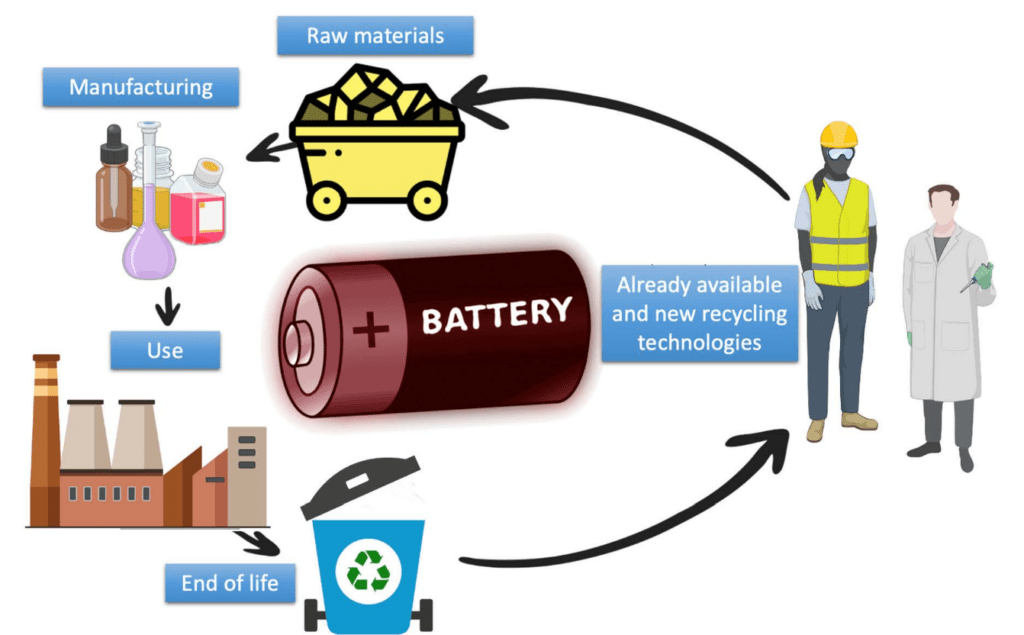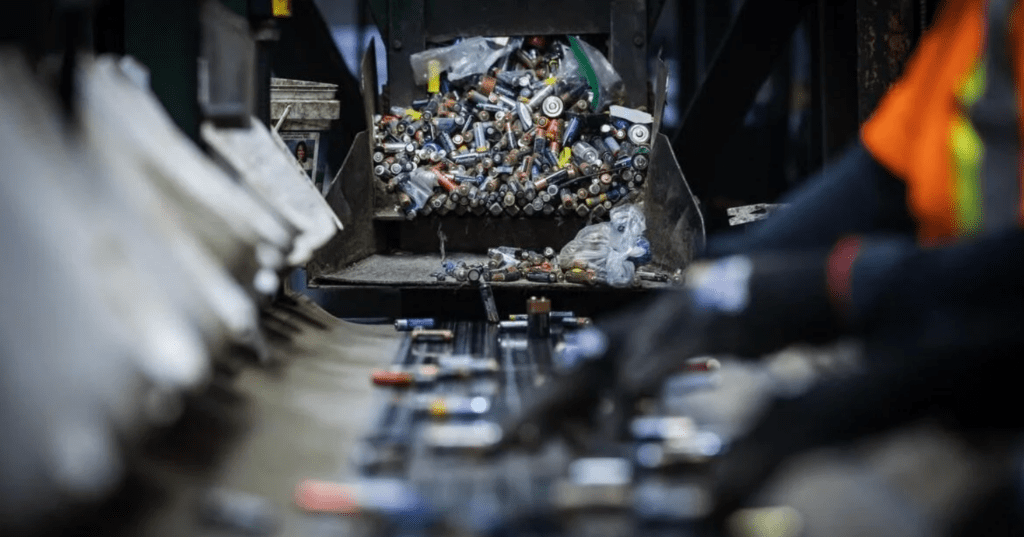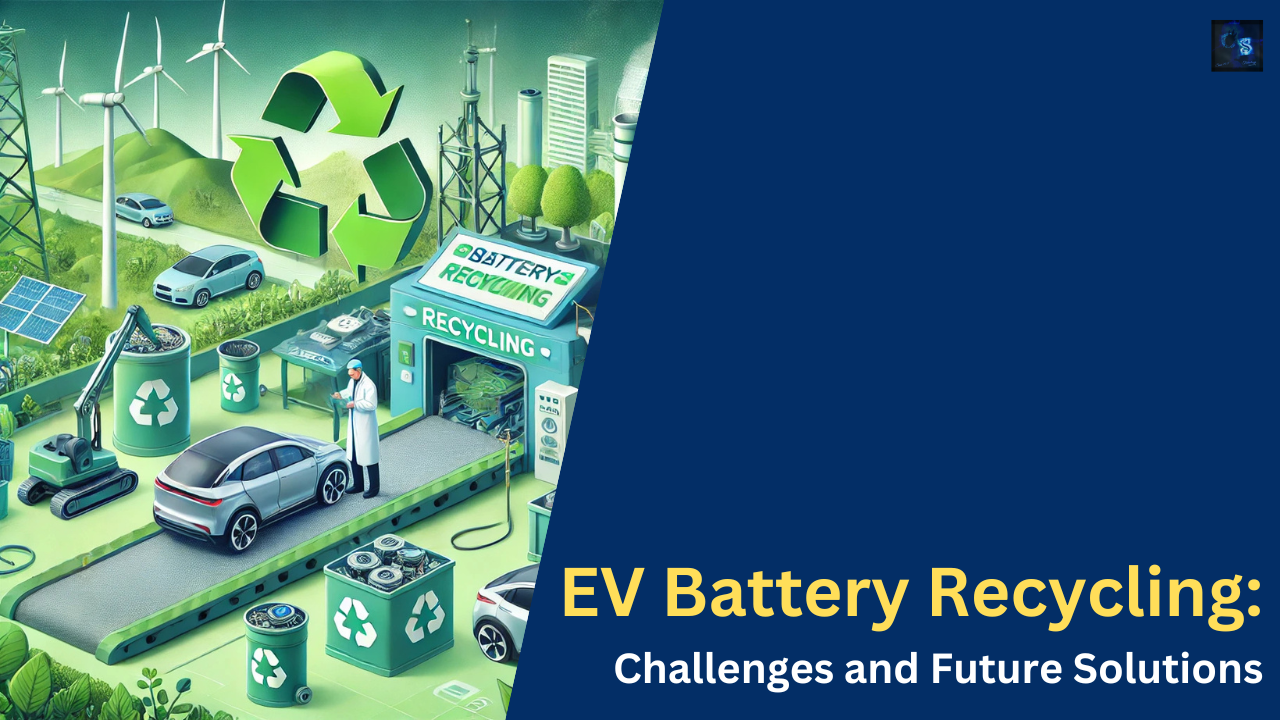EV Battery Recycling: Challenges and Future Solutions
Hello guys, welcome back to our blog. Here in this article, we will discuss EV battery recycling, what are the challenges, and the future solutions for it.
Ask questions if you have any electrical, electronics, or computer science doubts. You can also catch me on Instagram – CS Electrical & Electronics
- Importance Of Pressure Release & Venting Mechanisms In EV Batteries
- How Blockchain Can Improve Automotive Data Security
- ISO 21434: Road Vehicles – Cybersecurity Engineering A Complete Guide
EV Battery Recycling: Challenges and Future Solutions
The transition to electric vehicles (EVs) has accelerated in recent years as the world seeks sustainable transportation solutions. However, a critical challenge associated with EVs is battery recycling. The lithium-ion batteries (Li-ion) that power these vehicles have a limited lifespan, leading to concerns about resource depletion, waste management, and environmental impact.
Effective battery recycling is essential for reducing raw material dependency, minimizing pollution, and ensuring a circular economy. This article explores the challenges of EV battery recycling and the promising future solutions to make the process more efficient and sustainable.
Challenges in EV Battery Recycling

01. Complex Battery Composition
EV batteries are composed of various materials, including lithium, cobalt, nickel, manganese, and graphite. These materials are arranged in intricate cell structures, making the recycling process complicated. Unlike conventional lead-acid batteries, which have well-established recycling methods, Li-ion battery recycling requires advanced technologies to separate and recover valuable elements efficiently.
02. Lack of Standardization
The EV industry lacks standardized battery designs, leading to challenges in recycling. Different manufacturers use varying chemistries, shapes, and packaging, complicating automated dismantling and material recovery. The absence of uniformity increases recycling costs and limits the scalability of existing recycling technologies.
03. Economic Viability
Currently, the cost of extracting lithium and other metals from recycled batteries is often higher than mining virgin materials. Low commodity prices, coupled with complex recycling processes, make it economically less attractive for companies to invest in large-scale battery recycling facilities. Government incentives and policy frameworks are necessary to improve the financial feasibility of recycling operations.
04. Environmental and Safety Concerns
Improper disposal or handling of EV batteries can lead to environmental hazards and safety risks. Lithium-ion batteries are prone to thermal runaway, which can cause fires or explosions if not handled correctly. Additionally, toxic chemicals in batteries can contaminate soil and water if not disposed of properly. Ensuring safe and sustainable recycling practices is crucial to mitigating these risks.
05. Limited Collection and Infrastructure
Many countries lack adequate collection networks and recycling infrastructure for used EV batteries. The absence of efficient take-back schemes and recycling facilities results in batteries ending up in landfills or being exported to countries with less stringent environmental regulations. Strengthening global recycling infrastructure is necessary to prevent resource wastage and environmental degradation.
Future Solutions for EV Battery Recycling

01. Second-Life Applications
Before recycling, EV batteries can be repurposed for second-life applications. Many batteries still retain a significant portion of their capacity after being retired from vehicles. These batteries can be used in energy storage systems for renewable energy grids, backup power for homes, and industrial applications. Extending the lifespan of batteries through secondary use reduces waste and maximizes resource utilization.
02. Advanced Recycling Technologies
New and improved recycling technologies are emerging to make battery recycling more efficient and cost-effective. Some of the most promising methods include:
- Hydrometallurgical Recycling: This process involves using chemical solutions to dissolve and recover valuable metals from batteries. It is considered more environmentally friendly compared to traditional smelting methods.
- Direct Recycling: Instead of breaking down battery components into raw materials, direct recycling preserves and refurbishes the cathode and anode materials, making the process more energy-efficient.
- Cryogenic Recycling: This method involves freezing batteries to make them brittle and easier to crush, allowing for better separation of materials.
03. Policy and Regulatory Support
Governments worldwide are recognizing the need for better battery recycling policies. Regulations such as extended producer responsibility (EPR) mandate manufacturers to take responsibility for recycling end-of-life batteries. Incentives and subsidies can also encourage companies to invest in sustainable recycling technologies. The European Union’s Battery Directive and similar initiatives in other regions are shaping a structured approach to battery recycling.
04. Improved Battery Design
Designing batteries with recyclability in mind can significantly ease the recycling process. Innovations such as modular battery packs, easily separable components, and alternative chemistries that reduce reliance on scarce materials like cobalt are crucial for sustainable battery management. Manufacturers are working towards designing batteries that are easier to disassemble and recycle.
05. Blockchain and Digital Tracking Systems
Blockchain technology can enhance transparency and efficiency in the EV battery lifecycle. By tracking battery materials from production to end-of-life, stakeholders can ensure proper recycling and reuse. Digital passports for batteries can provide valuable information on battery health, composition, and ownership, facilitating streamlined recycling processes.
06. Public Awareness and Consumer Participation
Educating consumers about the importance of battery recycling and proper disposal can significantly improve collection rates. Establishing convenient drop-off points, take-back programs, and incentives for returning used batteries can enhance consumer participation in the recycling ecosystem.
Conclusion
EV battery recycling is a crucial aspect of sustainable electric mobility. While challenges such as complex compositions, economic viability, and lack of standardization persist, future solutions hold significant promise.
Advanced recycling technologies, second-life applications, policy support, improved battery designs, and digital tracking systems will play a vital role in shaping a robust recycling infrastructure. By addressing these challenges and embracing innovative solutions, the industry can create a circular economy that minimizes environmental impact and ensures resource sustainability for future generations.
This was about “EV Battery Recycling: Challenges and Future Solutions“. Thank you for reading.
Also, read:
- 100 (AI) Artificial Intelligence Applications In The Automotive Industry
- 1000+ Automotive Interview Questions With Answers
- 2024 Is About To End, Let’s Recall Electric Vehicles Launched In 2024
- 50 Advanced Level Interview Questions On CAPL Scripting
- 7 Ways EV Batteries Stay Safe From Thermal Runaway
- 8 Reasons Why EVs Can’t Fully Replace ICE Vehicles in India
- A Complete Guide To FlexRay Automotive Protocol
- Adaptive AUTOSAR Vs Classic AUTOSAR: Which One For Future Vehicles?
